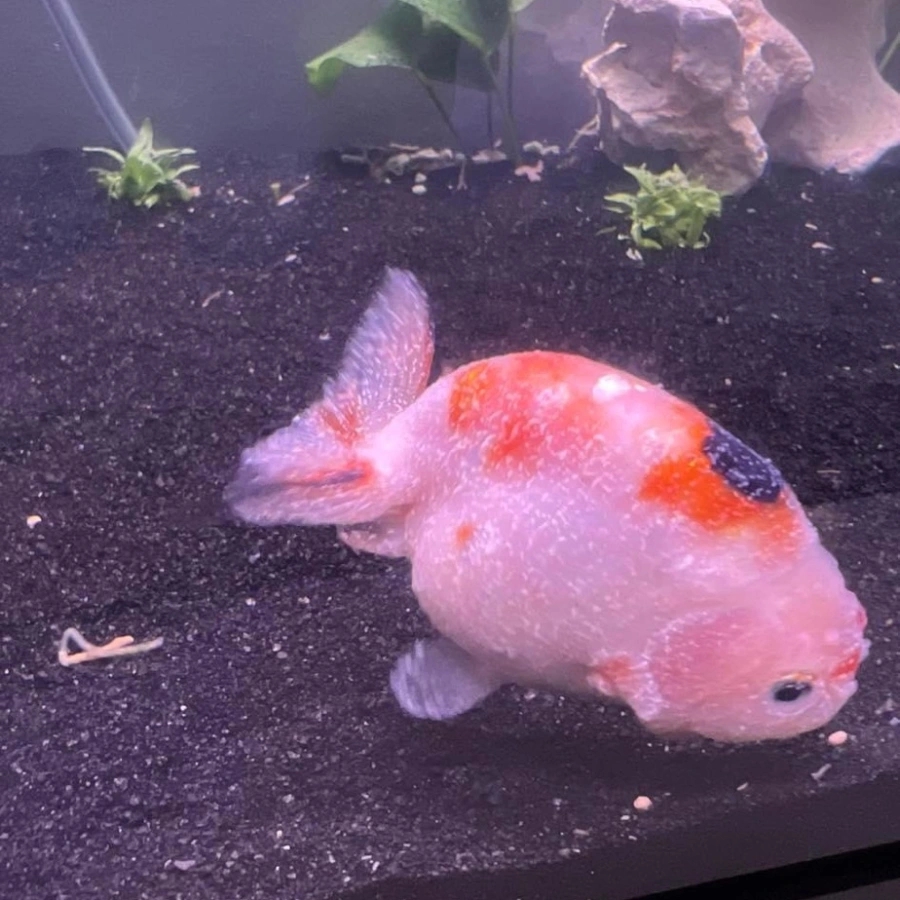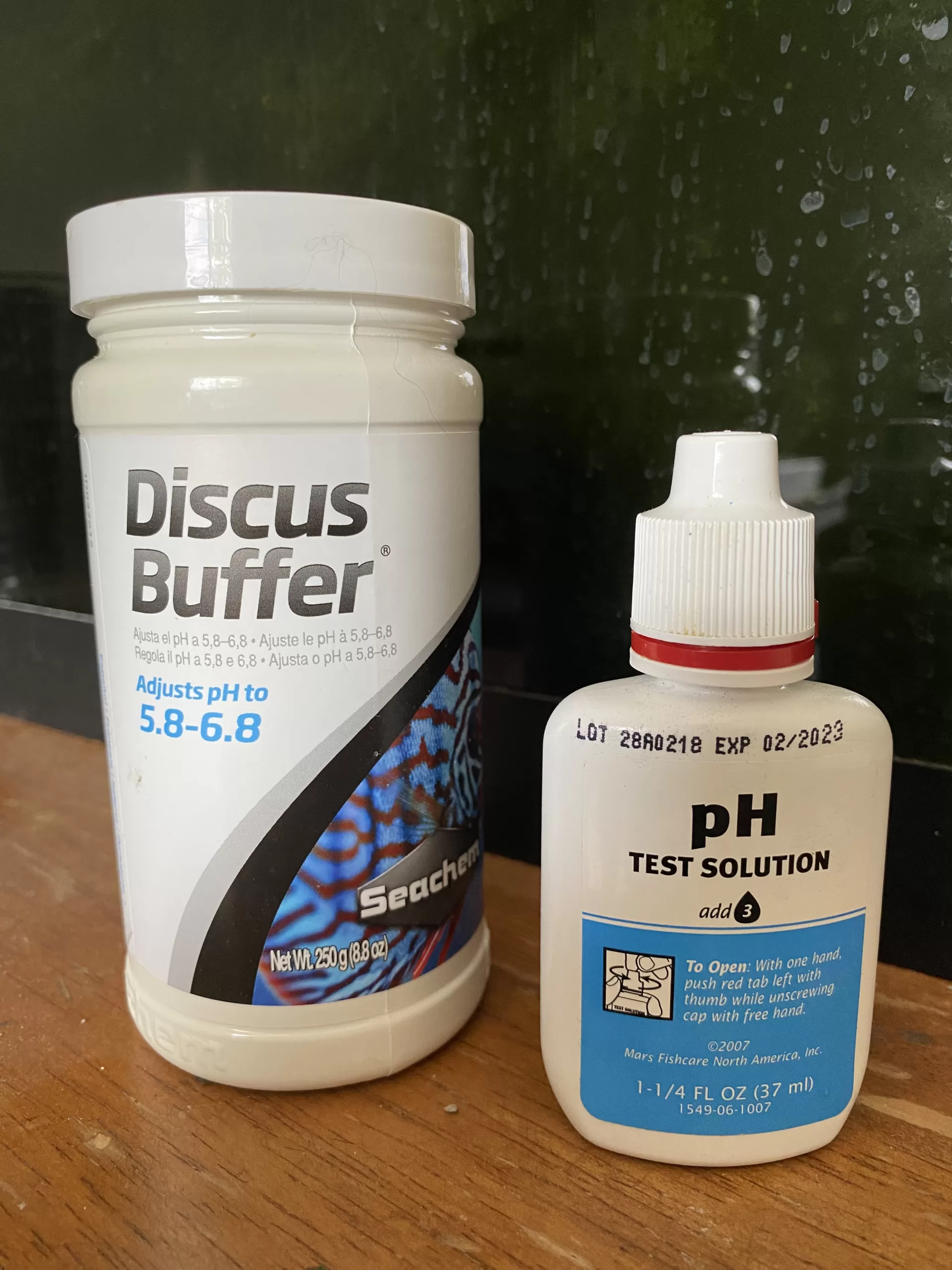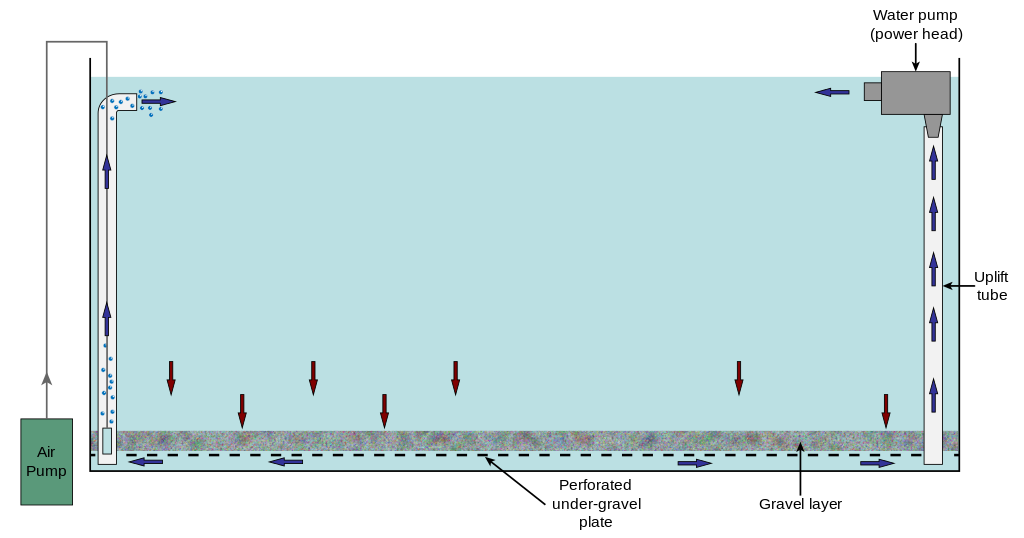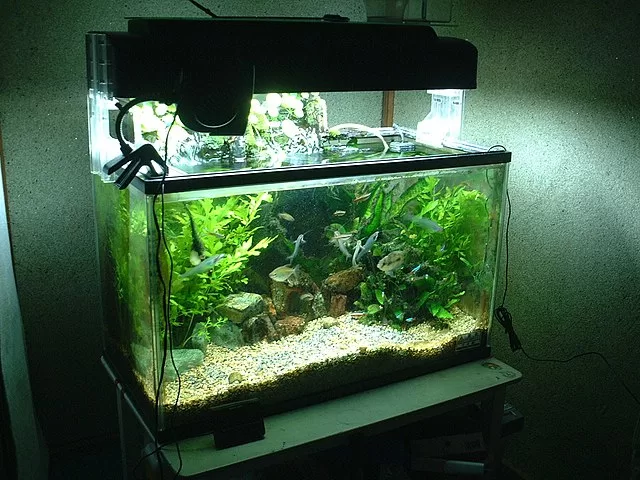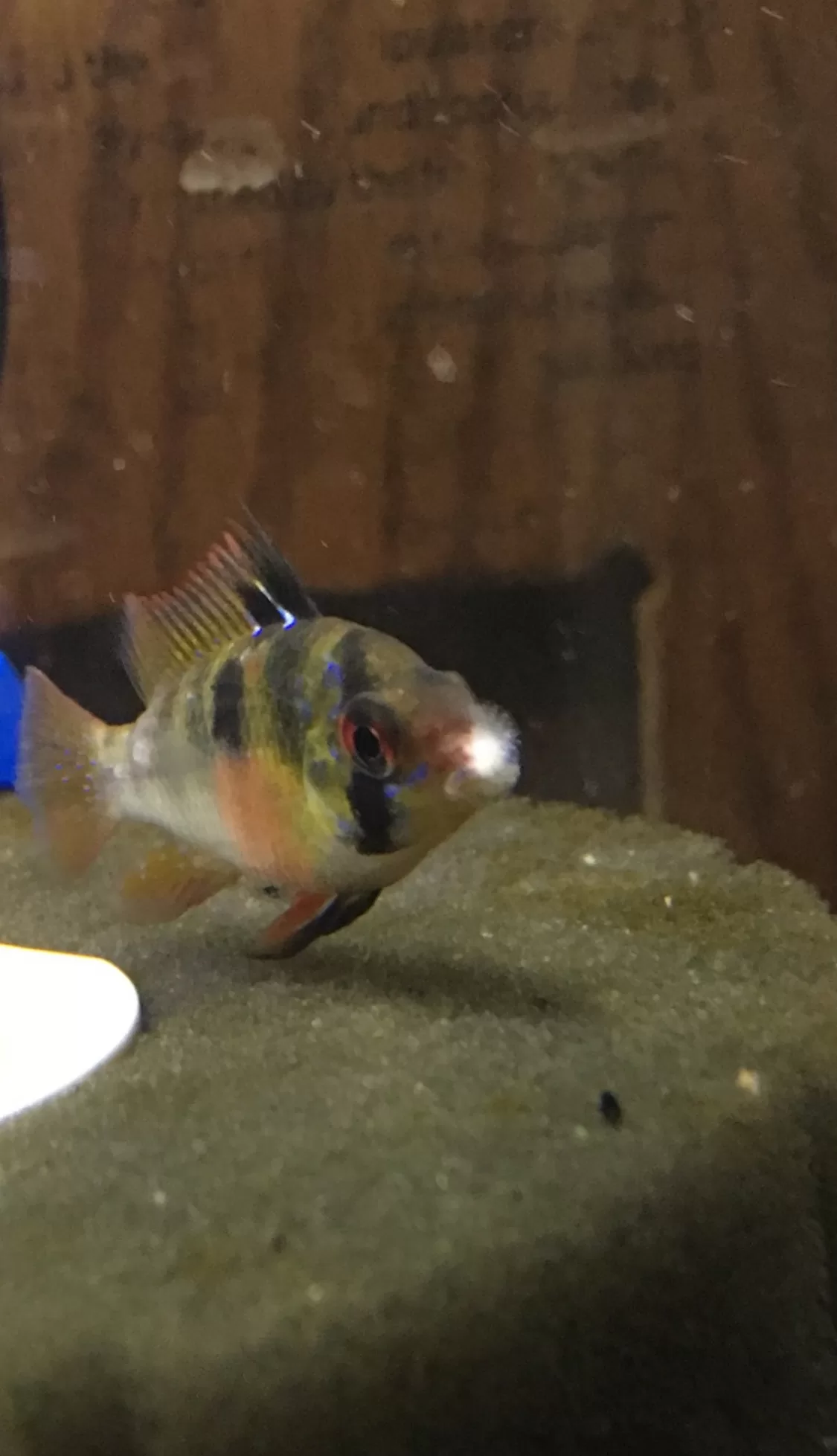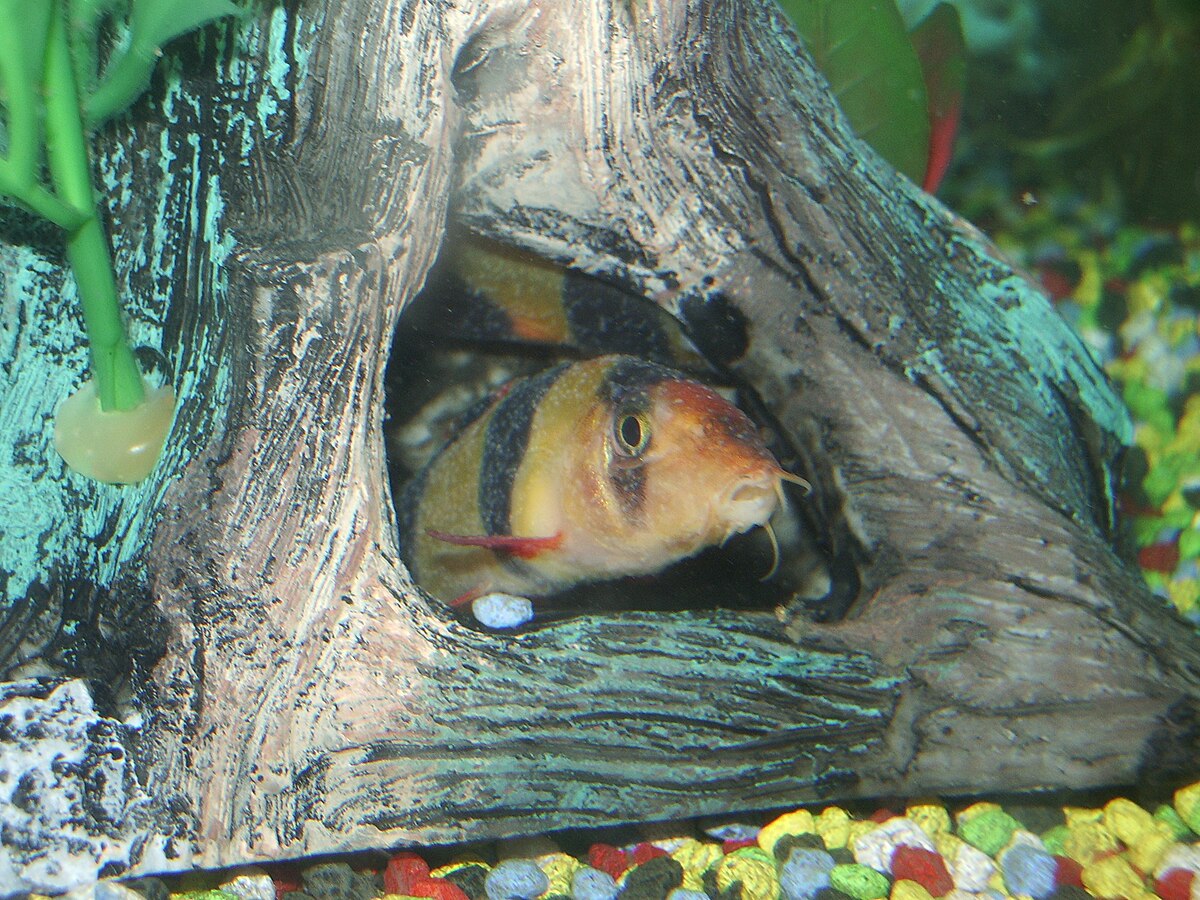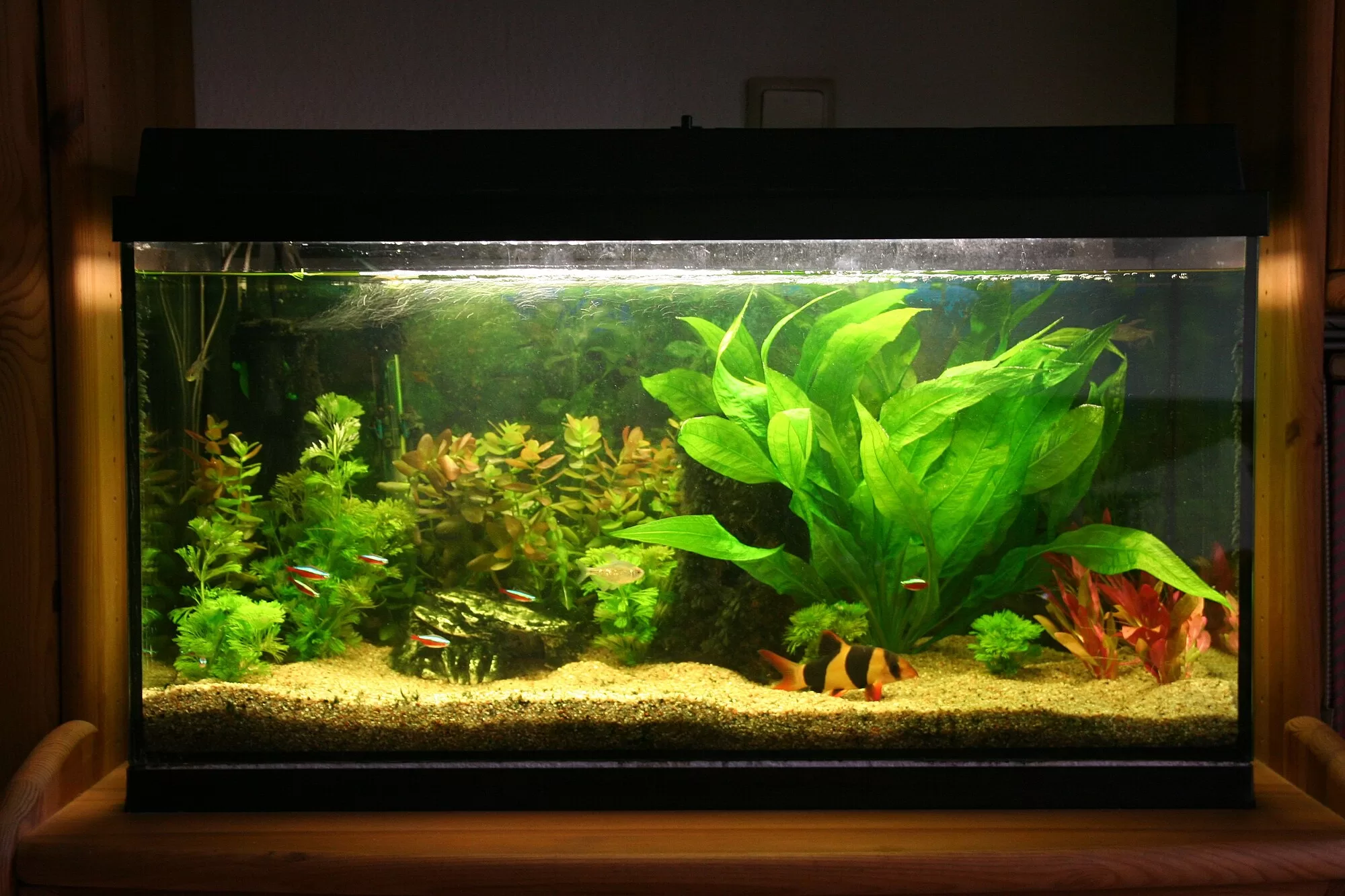For anyone serious about keeping their aquarium healthy, understanding the difference between Ich and Epistylis is issential. These are two very common issues that can affect your fish.
While both are highly treatable, they require different treatment methods, so identifying each is important for prognosis.
So let’s discuss each, look at pictures, and figure out the appropriate action.
Ich: The Unwelcome Visitor
Ich manifests itself as if the fish is covered in salt. These spots are relatively flat, not raised. They’re also uniform in size, meaning the spots do not drastically vary in size. Another important detail is that these spots will rarely be on the pupils, unlike Epistylis.
In Figure 1 below, you see an African Cichlid with a mild case of Ich. Notice how the spots are about the same size, not raised, and do not cover the pupil.
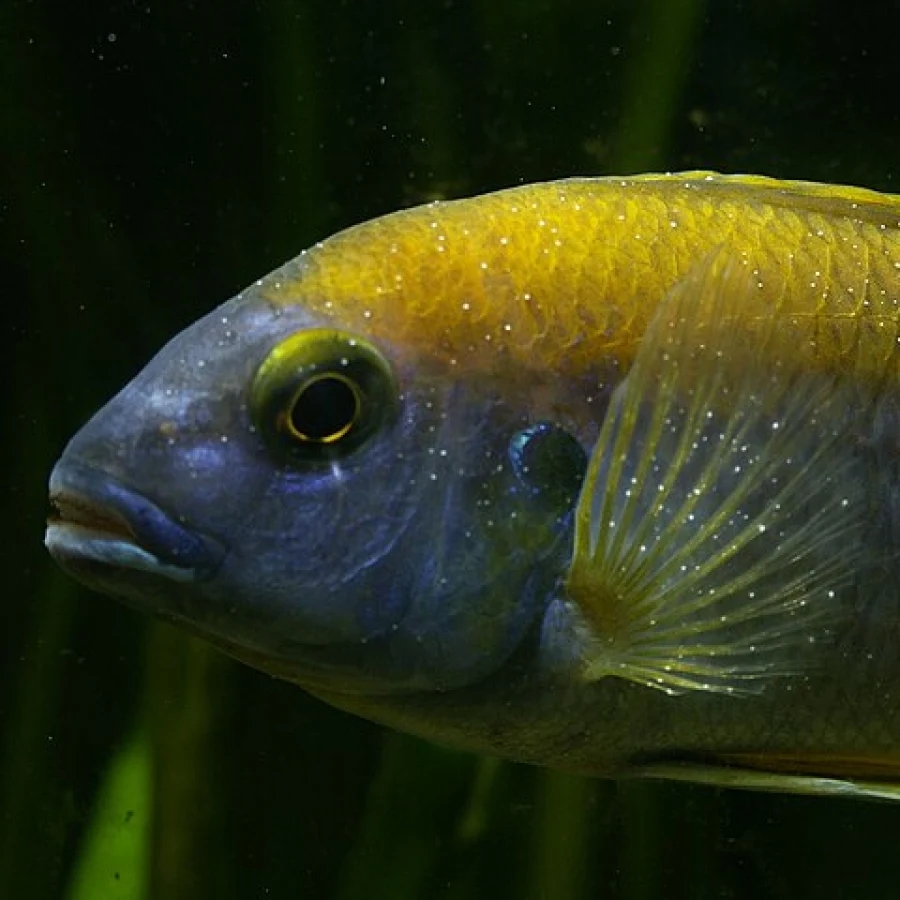
When you’re ready to begin treatment, raising the tank temperature to about 82F can speed up the treatment process. Raising the water temperature speeds up the lifecycle of Ich, and there are only certain stages that are vulnerable to the medication. Those two stages are called Theront and Tomont. So, the faster you can get the parasite to these stages, the quicker you can end the whole life cycle.
For medication, I would recommend a medication like Hikari Ich-x or a similar medication that contains both Formaldehyde and Malachite Green.
Many people will tell you “Just use salt” and while it’s possible to treat Ich with salt, it’s very subjective and not as reliable.
Epistylis: A More Complicated Issue
Now that we’ve covered Ich, a very minor and easy-to-treat parasite, that’s not the case with Epistylis.
Epistylis is a bit of a bigger deal. They’re slightly larger, vary in size, clump together, and do not lay flat. You’ll also see it on the fish’s eyes, specifically the pupil. It’s common to see secondary fin rot. Unlike Ich, Epistylis doesn’t feed off of your fish, it feeds off bacteria and organic matter in the tank.
Still, it causes trouble by creating spots that lead to fin rot, erodes the scales, and invites bacterial infections. Most commonly, Aeromonas hydrophila will cause secondary infection (1), leading to gastroenteritis and septicemia, and ultimately death if left untreated.
In Figure 2 below, you will see a Serpae Tetra with a moderately severe case of Epistylis. Notice that the spots are clumped together, vary in size, raised, and the spots cover part of the pupil.
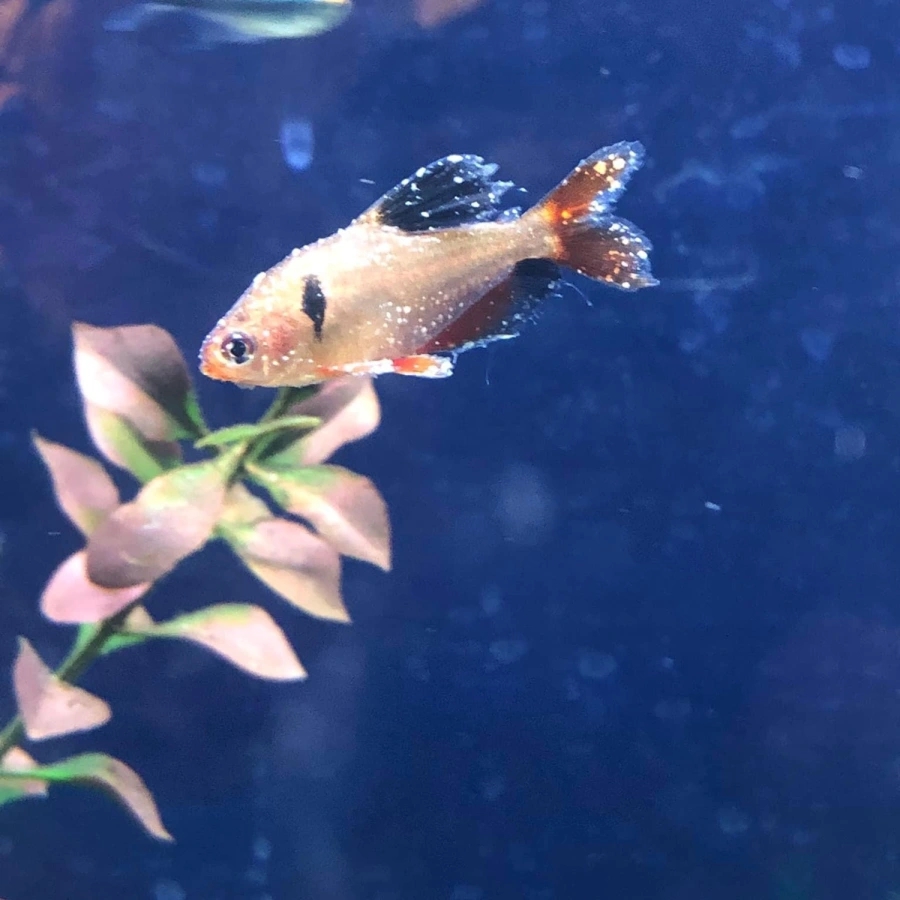
Treating Epistylis is a different ball game than treating Ich. Raising the water temperature like you would for Ich might worsen Epistylis.
Instead, focus on better water quality. Specifically reducing the organic waste that Epistylis feeds off of. This can easily be done through frequent water changes with gravel vacuuming, as well as reducing the amount of food you feed.
For dealing with the high levels of bacteria in the tank, using a good broad-spectrum antibiotic is recommended.
Alternatively, many scholarly sources recommend treatments like formalin or potassium permanganate. However, they need to be used very carefully and correctly because they are very powerful. Potassium permanganate will stain things like you’ve never seen stained before, and both should be used with gloves. I’m not exaggerating, please don’t use potassium permanganate unless you are confident with what you’re doing because it is an incredibly powerful oxidizer.
| Characteristic | Ich (Ichthyophthirius multifiliis) | Epistylis |
|---|---|---|
| Causative Agent | Protozoan parasite | Protozoan parasite, but more closely related to ciliates |
| Appearance | White spots resembling grains of salt on body and gills | Stalked colonies that look like tiny white tufts or threads on the fish’s body and gills |
| Life Cycle | Complex, including free-swimming stage to find a host, feeding and growing under the skin, then leaving the fish to reproduce | Reproduces asexually by budding; can form large colonies on the host |
| Affected Organisms | Primarily freshwater fish | Freshwater and saltwater fish, more common in poor water conditions |
| Symptoms | White spots, flashing/rubbing against objects, labored breathing, lethargy, clamped fins | Fuzzy or cotton-like growths, potential secondary infections due to skin damage, irritation |
| Treatment | Raising water temperature, formalin, copper-based treatments, salt baths | Improved water quality, antibiotic treatments for secondary infections, formalin |
| Preventative Measures | Quarantine new fish, maintain good water quality, regular monitoring | Good tank maintenance, proper filtration, avoid overcrowding, regular water changes |
Preventing Problems Before They Start
Treating fish for disease sucks, to be blunt. There are very few fish vets, even globally, and there are very few scientific studies and very little information compared to other animals such as cats and dogs. So a lot of these diseases and treatments are left to be solved by ourselves and other hobbyists. The best option is to avoid having to treat disease at all because the outcome is generally not good with most fish diseases.
Quarantining new fish, staying on top of your tank maintenance, and keeping a close eye on water quality are your best defenses. Under no circumstances should you ever introduce a new fish to your existing aquarium without quarantining. If you don’t have a quarantine tank, then you need to make one because to me it’s not optional. If you see white spots then the first course of action is to identify what you’re dealing with, Ich or Epistylis, and treat accordingly.
Wrapping it all up, it’s essential to understand the differences between Ich and Epistylis, as well as knowing the appropriate treatment for each. However, nothing beats prevention.
Citation

